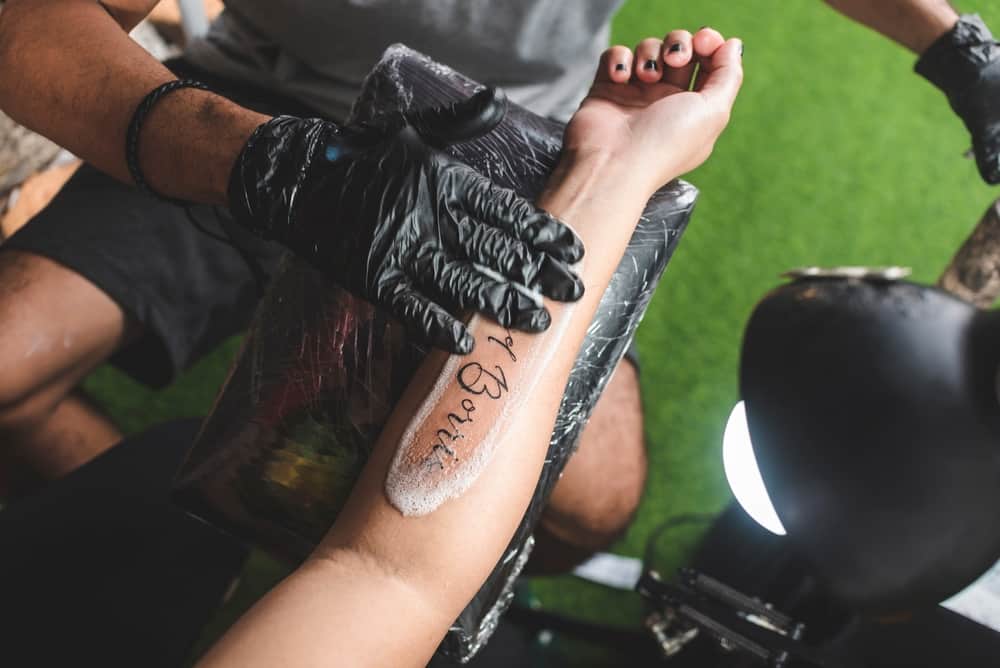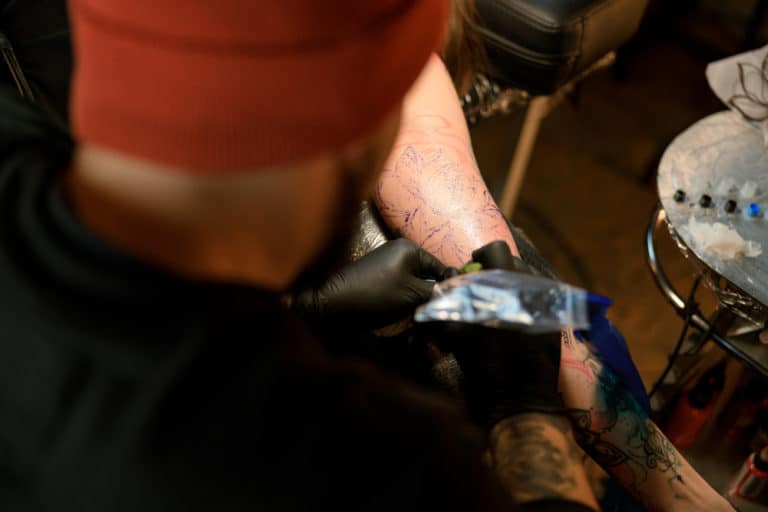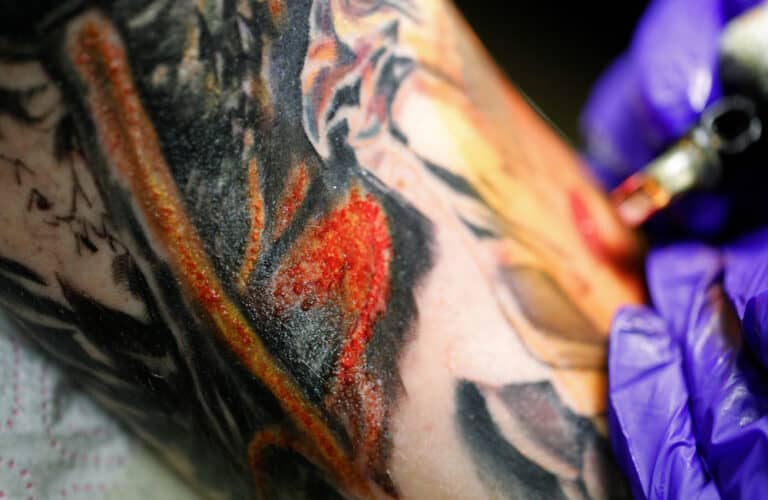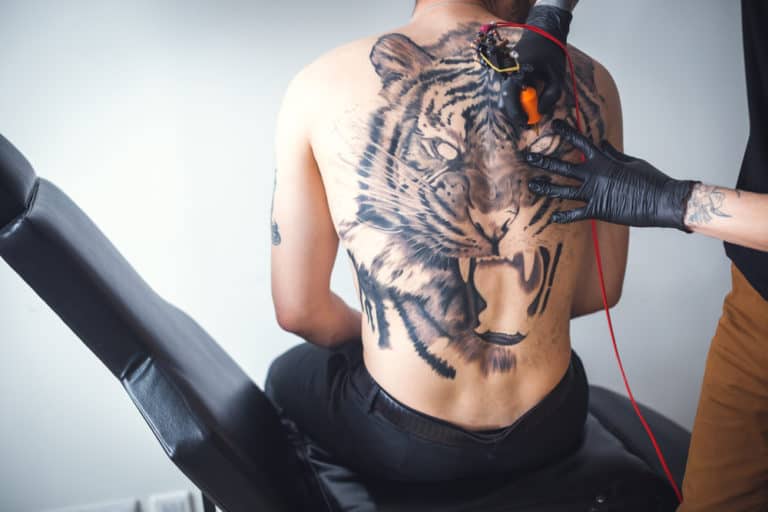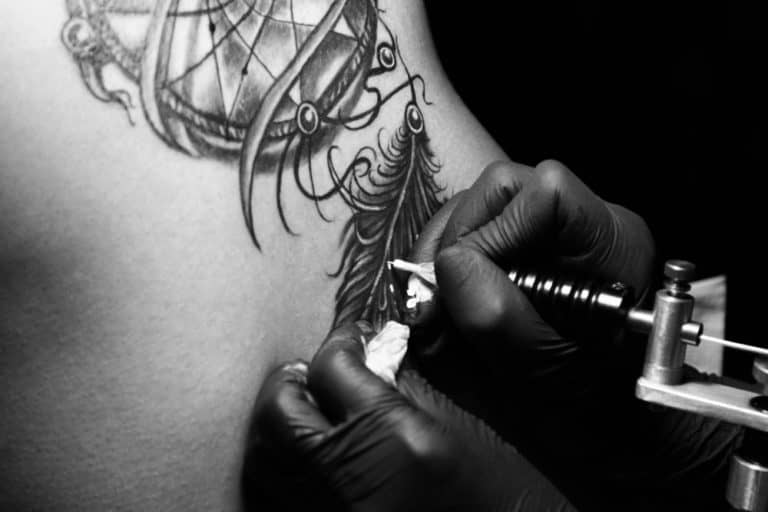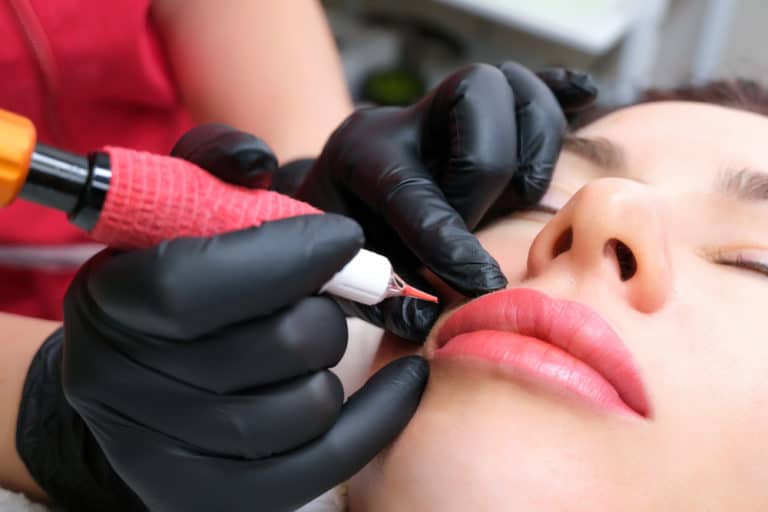Are Tattoos Raised At First?
Our bodies can react in many different and strange ways to tattoos, so it is normal to want to research what to expect or to discern that what you are experiencing is normal. The expected time when a tattoo is going to look and feel weird is in the days or weeks following when it was finished. This begs the question, are tattoos raised at first?
The skin where you get a tattoo will usually be raised after the session and is part of the healing process. However, there are many reasons why a tattoo may be raised, including the weather, your body chemistry, or an allergic reaction. But a raised tattoo is rarely a cause for worry.
If you ask any tattoo artist or person with tattoos, they will tell you that a tattoo will almost always be raised after it is done. However, this usually doesn’t last a few days or even weeks. Ultimately, everyone’s body will react differently to a tattoo and can heal according to a timeline that deviates from what’s expected, but it is rarely a reason to get worried.
Are Tattoos Raised At First?
Generally, it is normal and expected for a tattoo to be raised. While it isn’t normal for the skin around the tattoo to be puffy or swollen, the actual tattoo will usually be raised for a few days after getting it done. A raised tattoo is scarcely a cause for concern.
Remember, the process of getting a tattoo is traumatic to the body and involves pushing needles under the skin where they release ink into your dermis. Thus, it is only natural that your skin is raised after the shock your cells experience.
The Healing Process Of Tattoos
As a general rule, it takes 2 – 3 weeks for the outer layer of your skin to heal after a tattoo. But the skin underneath can take up to 6 months to truly heal. Of course, this is also dependent on the size and complexity of the tattoo and the aftercare regime.
The healing of a tattoo can be divided into four distinct stages:
Week 1
The tattoo will be initially bandaged as it is considered an open wound. Your body will respond to the trauma of the tattoo, possibly resulting in redness, oozing, slight inflammation and swelling, and a burning sensation.
Week 2
Itching and flaky skin will follow as your body forms a thing scab so the skin underneath can grow. You will notice bits of your skin peeling and falling off but don’t worry; your tattoo will be fine. It is important to resist scratching and picking at the scabs because it can damage your tattoo.
Weeks 3 and 4
This is when your tattoo may begin to dry out, and the itchiness and redness should begin to pass. Your tattoo may appear dull or faded, but it is only because of the dry skin formed over it. This will exfoliate naturally over time and reveal the vividness of the tattoo.
Months 2 to 6
Any itching and redness should have subsided, and your tattoo will look fully healed, but it is best to continue with the aftercare and do some long-term care.
What Can Cause A Raised Tattoo?
While it may be unusual, many different things can explain a raised tattoo.
- Bad Healing – The tissue damage caused by tattooing can trigger a process called phagocytosis. A good aftercare regime will take care of this issue and the overall recovery, but not taking care of your tattoo properly may just cause more problems.
- Weather Conditions – The weather plays a significant role in the health of your skin. Thus, if you find that your tattoo is suddenly raised for no apparent reason, the weather may be the culprit. Typically this will occur when the air is either very humid or very dry.
- Body Chemistry – Everyone’s body is unique and reacts differently to tattoos. Much like how some people bleed more than others during the tattoo process, some people will experience raised skin significantly more than others. Further, having a skin condition like eczema or psoriasis, then a raised tattoo can be a by-product of your sensitivity.
- Allergic Reaction – If the skin around the tattoo is raised, it could indicate that you are experiencing some sort of allergic reaction. This could be to the gloves, lubricant, or tattoo ink. An allergic reaction to the ink is rare but more often seen with colored ink – primarily red or yellow.
You can’t do much about a raised tattoo other than wait it out most of the time. However, if you think you are experiencing an allergic reaction, you must contact your doctor and seek emergency medical attention. Further, ask the artist for the ink’s name and ingredients so you and your doctor can determine the cause of the problem.
Many people may grow concerned when their tattoo is raised for an extended period of time, like months or years after getting the tattoo. Once tattoos move past the healing phase, there’s usually no significant reason as to why tattoos can randomly become raised, meaning it’s usually not a big problem. The cause may be one of the reasons discussed above.
How To Identify A Problem With A Raised Tattoo
While a raised tattoo on its own isn’t much cause for concern, it is the accompanying signs and symptoms which can point to a possible problem.
Two common occurrences during the healing process of a tattoo are itching and puffiness. But these can also be signs of an infection or allergic reaction. But don’t be too quick to jump to a diagnosis unless you have some other indicators such as swelling, pain, white spots, oozing, scabs and rashes, warmth, and pimples.
Tattoo infections or allergic reactions are rare, so be sure to talk to your artist before assuming the worst. Additionally, if you are very worried, get a doctor to look and see if there appear to be any issues.
Conclusion
Tattoos will often be raised at the very beginning of the healing process, just after they have been completed. They may also continue to be raised for a few weeks depending on your specific skin and body chemistry, as well as a few other factors. Additionally, tattoos can rise again after years, but it is usually harmless and temporary.

